CO2 Laser resurfacing is used to treat a plethora of concerns and conditions. It can be used for ‘small’ problems like skin rejuvenation, as well as bigger and more dramatic treatments for scars and burns.
Using a CO2, fractional laser, our nurses can deliver concentrated pulses of light to the skin, removing the top layer or layers, which makes wrinkles and lines fade away. During the healing process, new skin emerges, which appears taut and smoother, leading to an overall healthier and refreshed appearance.
The heat energy caused during treatment stimulates collagen production that helps firm up the skin. In addition it makes tiny perforations in scar tissue helping to soften and smooth out scar tissue and improve movement around scars.
Laser resurfacing is one of the most efficient tools for improving facial scarring either as a result of injury or earlier surgery. It has also opened up the possibility to treat difficult to treat and stubborn problems such as acne scarring.
It is estimated that 80% of people aged 11-30 will be affected by acne. This frequently results in scarring. The first step in treating acne scarring is to eradicate the acne. When this has been achieved the residual scarring can be targeted.
Dermatology Matters specialises in acne scarring, providing an extensive range of treatments both to eradicate acne and to improve the appearance of the residual scars.
Individuals may have one or more type of scarring. Different types of scarring respond better to different types of treatment. Therefore, it is common for one person to need a combination of treatments or procedures.
Rejuvenation: Lines and Wrinkles
Carbon dioxide laser resurfacing has proved to be a valuable method for facial rejuvenation of photodamaged skin with detectable improvement of fine lines and wrinkles, mottled dyspigmentation, rough skin texture, and solar lentigines.
New generation fractional devices use ablative wavelengths as high as 10400nm also referred to as CO2 Lasers. CO2 Lasers are considered the gold standard for skin resurfacing. The results are far more predictable and the results are more dramatic. The procedure is performed under local anaesthesia and light sedation if desired
How many sessions will I need, and how far apart can I have them?
For more superficial treatments, patient may need on average need 2-3 sessions of treatment approximately 4-6 weeks apart. For scarred skin and burns, the patient may need several sessions, depending on the desired result. If the skin scars are raised or red in colour, other treatments may be advised in combination with the CO2.
Am I a suitable candidate?
As mentioned, the CO2 can be used for many different indications. A suitable candidate will be someone who is looking for fresher, younger-looking skin, or someone who has burns or scars and wishes to reduce their appearance and regain movement. All skin types can be treated with the CO2 laser but darker skin types need to be treated with a little caution.
What Areas Can be Treated?
The device can be used on most areas of the body.

